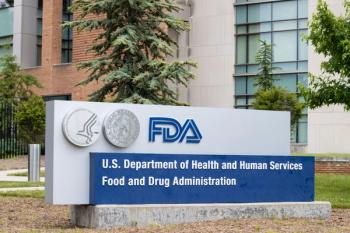
Cost in Cardiovascular Care: ESC 2024
A heart failure program with a multidisciplinary team provides statistically significant improvements, and 2 countries determine the current prices of semaglutide are not cost-effective for secondary prevention of cardiovascular disease in patients with obesity, according to abstracts at the European Society of Cardiology (ESC) Congress 2024.
New cardiovascular disease (CVD) therapies are expensive, but the cost of not treating the disease is higher. CVD remains the leading cause of death in the US, and from 2019 to 2020, it cost the US about $252.2 billion for the cost of health care services, medicines, and loss of productivity due to death.1
Abstracts presented at the
Value-Based Care vs Usual Care
Researchers from Las Vegas, Nevada, evaluated a heart failure program with OptumCare that used a multidisciplinary team to manage patients with newly diagnosed heart failure.2 The team was comprised of cardiologists, advanced practice clinicians, registered nurse case managers, and a social worker. Higher-risk patients were enrolled in remote patient telemonitoring.
The program in Las Vegas was compared with a separate OptumCare program in Arizona that followed usual care with cardiology groups contracted under fee for service.
There were 818 matched pairs of patients who enrolled in the program or had a first heart failure diagnosis between March 1, 2019, and June 30, 2022. The average age of patients was 77.6 years and 49% were female.
The value-based care group had significantly lower overall medical costs per member per month, significantly less emergency department visits, less acute hospital and skilled nursing facility admissions, and shorter overall hospital length of stays.
In addition, the treatment group had a better survival rate, with only 10% dying in the 12 months after enrollment compared with 19% in the usual care group. The average survival was 200 days for the treatment group compared with 142 days for the usual care group.
“A value-based care approach involving a multidisciplinary team in an outpatient-based cardiology [heart failure] program resulted in statistically significant improvement in medical costs, acute care visits/admissions, and survival rates compared to ‘usual’ care approach for [heart failure] patients,” the authors concluded.
Semaglutide for Secondary Prevention of CVD
Two abstracts evaluated the cost-effectiveness of semaglutide for secondary prevention of CVD in people with overweight or obesity: one from a US perspective3 and the other from an Australian perspective.4 Both abstracts utilized models based on the SELECT trial.
In the US perspective, researchers compared semaglutide with no obesity treatment using the Cardiovascular Disease Policy Model, which is an established, validated simulation of fatal and nonfatal CVD outcomes and costs in the US.3 The model has been used for more than 30 years and was designed to be nationally representative of the US population.5
The researchers created a nationally representative cohort of the individuals who would have been eligible for the SELECT trial using data from the National Health and Nutrition Examination Survey. In the simulation, the control arm received usual care while the intervention arm received semaglutide once weekly (2.4 mg). The assumed monthly cost of semaglutide was $717.
Among the 4.7 million US adults who meet the SELECT trial criteria, once-weekly semaglutide was projected to avert 538,000 major adverse cardiovascular events at an incremental cost of $613 billion over a lifetime horizon. The incremental cost-effectiveness ratio was $443,000 per quality-adjusted life-year (QALY). Costs would have to decline 90% to meet the cost-effectiveness threshold of $50,000/QALY; 79% to meet the $100,000/QALY threshold; and 69% to meet the $150,000/QALY threshold.
They determined that a potential upper threshold for cost-effectiveness in the US is the current United Kingdom price of approximately $220 per patient per month, which would improve the incremental cost-effectiveness of semaglutide to less than $150,000/QALY.
“Widespread uptake of semaglutide in the SELECT-eligible US population would prevent a large number of cardiovascular events, but its use would be low economic value at current US prices,” they wrote.
In the Australian abstract,4 they evaluated if semaglutide was cost-effective when used with standard care of background use of lipid-lowering, antihypertensive, and/or antiplatelet therapies. They used a Markov model based on the SELECT trial and estimated the cost to be AUD $80 (approximately US $54) per week.
Treating 1000 subjects with overweight or obesity and existing CVD with semaglutide prevented 126 nonfatal cardiovascular events and 81 deaths over a 20-year time horizon compared with placebo. In addition, the difference in total discounted costs was AUD $43,955 (approximately US $29,774) per person, equating to an incremental cost-effectiveness ratio of AUD $96,055 (US $65,066) per QALY gained.
At the current price in Australia, semaglutide is not considered cost-effective for secondary prevention of CVD in people with obesity or overweight assuming a willingness-to-pay threshold of AUD $50,000 (US $33,869) per QALY gained. The researchers noted that a price reduction of 52% would be required.
“Given the modest event rates reported in SELECT, cost-effectiveness is likely to improve if use of semaglutide is targeted to higher risk groups,” they concluded. “Moreover, SELECT primarily focused on cardiovascular benefits; however, data supporting the impact of semaglutide on a number of other weight-related complications are anticipated and will inform a more holistic understanding of its cost-effectiveness.”
References
1. Heart disease facts. CDC. Accessed August 30, 2024. https://www.cdc.gov/heart-disease/data-research/facts-stats/index.html
2. Barbarash SB, Flores J, Zhu L, Cooper K, Siddiqui Y, Caraang C. Value-based versus usual care for heart failure patients leads to reduction in cost, hospital admissions and improved survival. Presented at: ESC Congress 2024; August 30-September 2, 2024; London, England.
3. Hennessy S, Penko J, Bellows BK, et al. Cost-effectiveness of semaglutide for secondary prevention of cardiovascular disease in the United States. Presented at: ESC Congress 2024; August 30-September 2, 2024; London, England.
4. Zomer E, Zhou J, Nelson AJ, Nicholls SJ, Stub D, Zoungas S. Semaglutide for the secondary prevention of cardiovascular disease in people with overweight or obesity, but without diabetes: a cost-effectiveness analysis. Presented at: ESC Congress 2024; August 30-September 2, 2024; London, England.
5. Cardiovascular disease policy model. University of California San Francisco Department of Epidemiology & Biostatistics. UCSF. Accessed September 1, 2024. https://epibiostat.ucsf.edu/cardiovascular-disease-policy-model
Newsletter
Stay ahead of policy, cost, and value—subscribe to AJMC for expert insights at the intersection of clinical care and health economics.








































